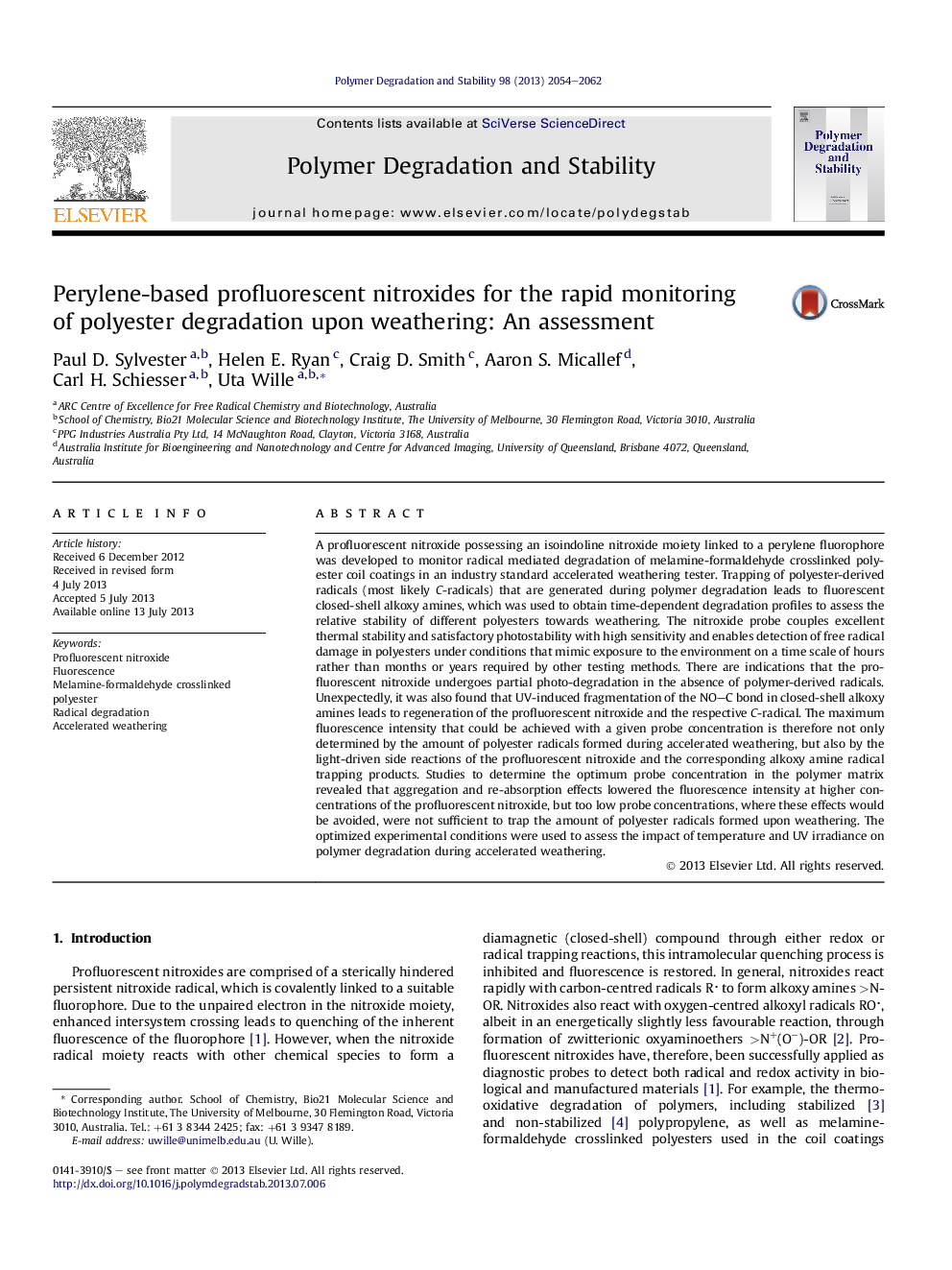| کد مقاله | کد نشریه | سال انتشار | مقاله انگلیسی | نسخه تمام متن |
|---|---|---|---|---|
| 5202069 | 1381887 | 2013 | 9 صفحه PDF | دانلود رایگان |
عنوان انگلیسی مقاله ISI
Perylene-based profluorescent nitroxides for the rapid monitoring of polyester degradation upon weathering: An assessment
دانلود مقاله + سفارش ترجمه
دانلود مقاله ISI انگلیسی
رایگان برای ایرانیان
کلمات کلیدی
موضوعات مرتبط
مهندسی و علوم پایه
شیمی
شیمی آلی
پیش نمایش صفحه اول مقاله

چکیده انگلیسی
A profluorescent nitroxide possessing an isoindoline nitroxide moiety linked to a perylene fluorophore was developed to monitor radical mediated degradation of melamine-formaldehyde crosslinked polyester coil coatings in an industry standard accelerated weathering tester. Trapping of polyester-derived radicals (most likely C-radicals) that are generated during polymer degradation leads to fluorescent closed-shell alkoxy amines, which was used to obtain time-dependent degradation profiles to assess the relative stability of different polyesters towards weathering. The nitroxide probe couples excellent thermal stability and satisfactory photostability with high sensitivity and enables detection of free radical damage in polyesters under conditions that mimic exposure to the environment on a time scale of hours rather than months or years required by other testing methods. There are indications that the profluorescent nitroxide undergoes partial photo-degradation in the absence of polymer-derived radicals. Unexpectedly, it was also found that UV-induced fragmentation of the NO-C bond in closed-shell alkoxy amines leads to regeneration of the profluorescent nitroxide and the respective C-radical. The maximum fluorescence intensity that could be achieved with a given probe concentration is therefore not only determined by the amount of polyester radicals formed during accelerated weathering, but also by the light-driven side reactions of the profluorescent nitroxide and the corresponding alkoxy amine radical trapping products. Studies to determine the optimum probe concentration in the polymer matrix revealed that aggregation and re-absorption effects lowered the fluorescence intensity at higher concentrations of the profluorescent nitroxide, but too low probe concentrations, where these effects would be avoided, were not sufficient to trap the amount of polyester radicals formed upon weathering. The optimized experimental conditions were used to assess the impact of temperature and UV irradiance on polymer degradation during accelerated weathering.
ناشر
Database: Elsevier - ScienceDirect (ساینس دایرکت)
Journal: Polymer Degradation and Stability - Volume 98, Issue 10, October 2013, Pages 2054-2062
Journal: Polymer Degradation and Stability - Volume 98, Issue 10, October 2013, Pages 2054-2062
نویسندگان
Paul D. Sylvester, Helen E. Ryan, Craig D. Smith, Aaron S. Micallef, Carl H. Schiesser, Uta Wille,